The Department of Home Affairs has released temporary visa data for the December quarter of 2023, which shows that net overseas migration remained turbo-charged.
The charts below summarise the data and compare visa numbers as of 31 December of each respective year.
First, there were 2,763,000 temporary visas on issue as at 31 December 2023, which was the highest end-of-year number on record and around 350,000 higher than the pre-Covid level in 2019:
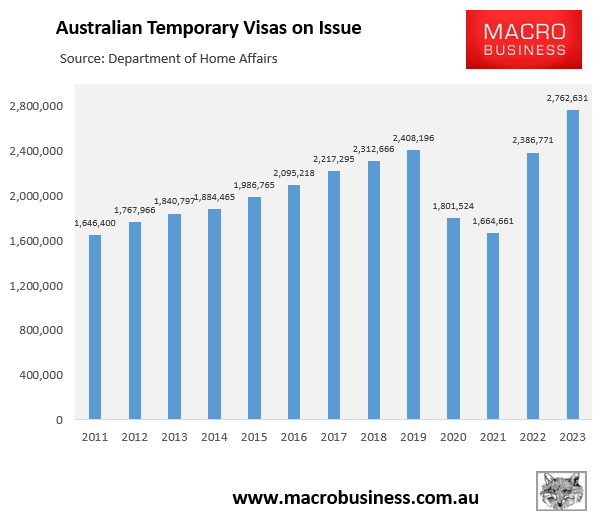
When excluding visitors, there were 2,162,000 temporary visas on issue as of 31 December 2023, roughly 390,000 more than the pre-covid level in 2019:

There were 547,000 temporary student visas on issue as of 31 December 2023, roughly 70,000 more than the pre-covid level in 2019:
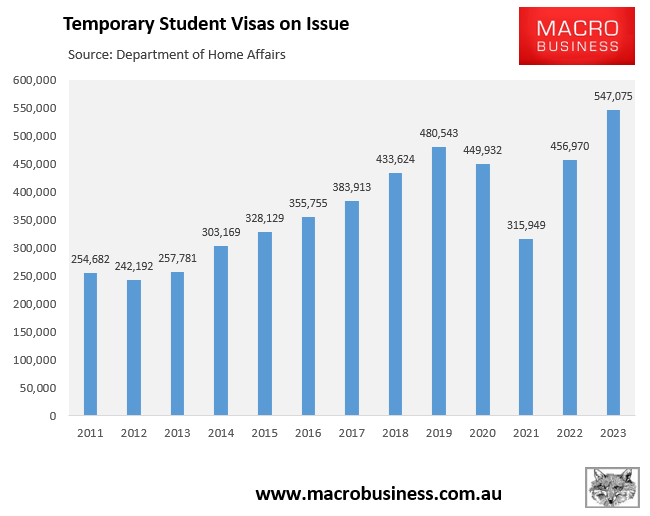
Graduate visas have been one of the key growth areas in visa numbers. There were 180,000 temporary graduate visas on issue as of 31 December 2023, double the pre-covid level in 2019:
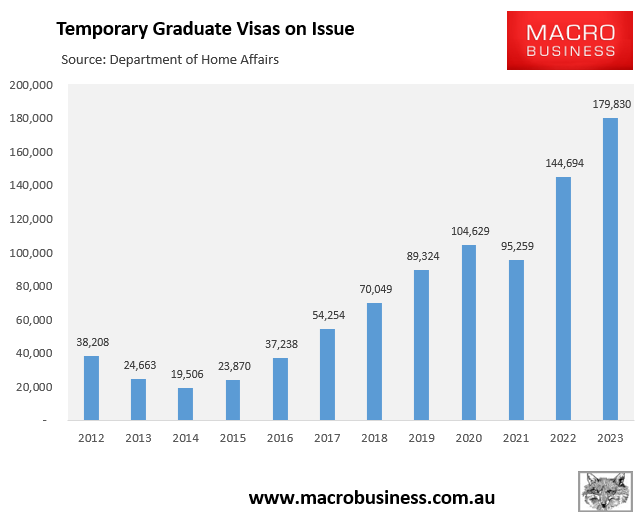
There were 212,000 temporary bridging visas on issue as of 31 December 2023, roughly 20,000 more than the pre-covid level in 2019:

There were 308,000 temporary employment visas on issue as of 31 December 2023, nearly double the pre-covid level of 158,000 in 2019:

There were 170,000 temporary working holiday visas on issue as of 31 December 2023, roughly 30,000 above the pre-covid level of 141,000 in 2019:
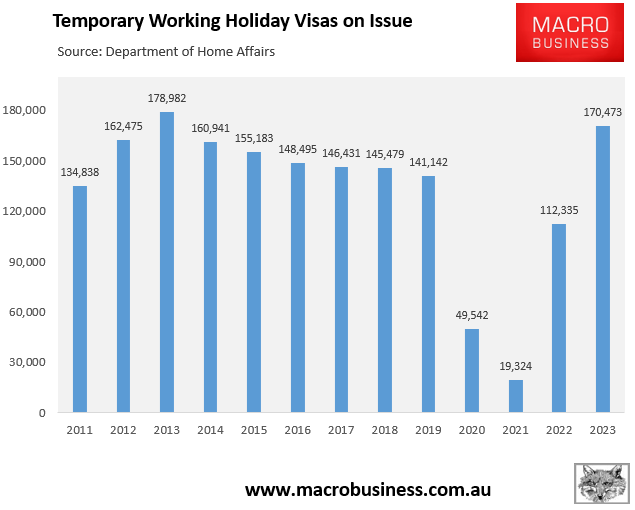
Finally, the below chart shows that there were 1.2 million temporary visas with work rights (defined as the sum of student, work, working holiday, and graduate visas) as of 31 December 2023, roughly 335,000 above the pre-covid level of 869,000 in 2019:

The good news is that net overseas migration has peaked after hitting a record 518,000 in 2022-23.
On Friday, The SMH’s David Crowe reported that a “crackdown” on student visa applications, and increased rejections, has reduced student visa grants by 20%:
“Home Affairs Minister Clare O’Neil sent a formal instruction to the Department of Home Affairs last year, known as Ministerial Direction 107, to tell officials to put a priority on student visa applications for universities with a good track record and to give the lowest priority to those for institutions with a history of problems”…
“The results from the department show that overseas students are being turned away in record numbers because the visa grant rate has been driven down to 80%, the lowest since records began in 2005”.
“In a rare fall, the student visa grants in December were lower than in November – a sign of fewer arrivals for the coming academic year – and are 20% below the same period last year”.
“The outcome shows the department is bringing international student visa grants down from 370,000 last financial year to 290,000 this year and believes there is a reasonable chance the outcome will be slightly lower”…
“O’Neil has vowed to bring migration down to normal levels over time”.
The below chart from Justin Fabo at Antipodean Macro aligns with the above, showing that “the flow of international students to Australia is slowing as evidenced by a decline in student visa grants”:
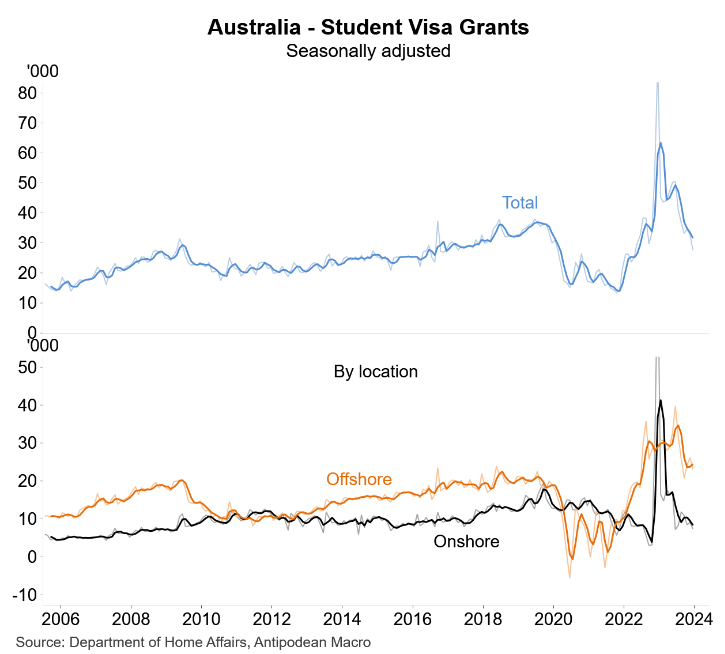
The Mid-Year Economic and Fiscal Update forecast NOM of 375,000 in 2023-24, down from the record high 518,000 recorded in 2022-23:

While these 375,000 figures would still be the second highest NOM in Australia’s history, it should at least reduce pressure on the nation’s rental market; although, this will also depend on the extent to which housing construction declines alongside the moderation in immigration.
Moreover, Clare O’Neil’s claim that 250,000 NOM is “normal” doesn’t pass the pub test. It is historically high, as illustrated in the next chart:

“Normal” or manageable immigration is what existed pre-2005, at below 120,000 NOM a year.

